I’ve never seen a Bushpig. I have loved wildlife for as long as I can remember, and wherever I go, I keep an eye open for things that creep and crawl and growl and bustle about in the undergrowth. I’ve seen quite a lot over the years, and in terms of mammals, I can page through a South African mammal guide and tick off most of the list, not counting rats and mice and bats, because life is too short.
There are a couple of ticks missing. I’ve never seen a Serval, or a Pangolin. But that’s OK. Hardly anyone has. They’re pretty rare. But I’ve never seen that Bushpig, either. And they are not rare at all. Better yet, they tend to cling on in areas where most other big mammals have been wiped out. They are pests for farmers, and lurk around in thickets along hiking trails and wilderness areas.
They just don’t want me to see them. Which is hurtful and unkind. But I’ve learned to cope. We live in an age when real men are allowed to cry. And today I realised that it’s not just the Bushpigs. The owls have been doing it to me too.
I’m not a birdwatcher. I’ve learned to identify quite a few of them over the years, and know a little bit about them, but I’ve never set out to find them. They’re just there.
Owls are different though. Owls are cool. I would happily go out looking for owls. Yep, it’s time for yet another post on the owls of the Lowveld. There’s a seemingly endless supply of the buggers. And today was going to be a bit tricky, because two of the three were rare. Hard to find. Little known. Seldom seen. Or so I thought.
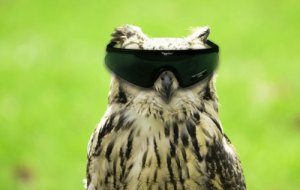
They really are cool. I defy you to tell me this doesn’t somehow just seem right.
The Marsh Owl.
The name says it all. These rare, seldom seen birds lurk about in deep, dank, inaccessible areas, hiding out in deep, rank beds of tall reeds, almost unknown to science due to the impenetrable and moist nature of their chosen habitat. which explains why I’ve never seen one. Or.
Or, as I learned today, they are one of the most commonly seen owls in the Lowveld. The way the guide books speak about them, it’s a surprise that there isn’t a mandatory speed-limit of 10km/h for Lowveld cyclists to stop them getting caught in bicycle spokes.
They are fairly common, for a start. But it’s more than that. A marsh, certainly in South Africa, is usually just an area of open grassland that happens to be quite moist. And Marsh owls are not perfectly named. It seems to be the open grass, rather than the moist, that they’re after. You can find them in fairly dry areas. If you happen not to be me.
They aren’t small, about 36cm tall, and in the grassland have nowhere to hide. And it gets better. They spend much more time flying around and hunting during the day than most other owls. But wait. As in any good infomercial, there’s more. They are less territorial than other owls, but when they are breeding, they launch into spectacular display flights, with wing clapping and deep croaks. In broad daylight.
But wait. Sigh. There is, as always, more. When they’re not breeding, they roost together. In groups up to 75 strong. In the open grassland. On prominent perches. In the daytime.
And I’ve never seen one. Neither hide nor hair of one. This is quite an achievement, even if I say so myself. This is like going to a Grateful Dead concern and not being able to find any high people. Like going to an online gaming convention and not being able to find a virgin. I’d hardly even heard of them.
Maybe next time. They are actually fairly interesting owls. I kept talking about how open grassland is. It is, for us. But if you go and throw a fieldmouse into a field of knee-high grass and then try to find it, you will find that in a lot of ways it isn’t. Rats and mice are actually much easier to find in forests.
It also just so happens that grassland supports more rats and mice that almost any other habitat. There is a rich resource to be exploited, but it’s hard to exploit it. The Marsh Owl manages to do so. All owls rely on their hearing to hunt, but the Marsh owl does so more than most. It’s the only way to find their prey. And it’s not a hugely successful way. About 80% of their hunts fail.
The Wood Owl.
And then there’s the Wood Owl. I’ve never seen him, either. But that’s OK. Neither has anyone else. Wood Owls hang out in deep, forested areas of the Lowveld along the rivers. They are strictly nocturnal. And they are uncommon.
They live on insects and birds, with the odd snake or Bushbaby thrown in. And that’s about it. Seldom seen equates with little known.
But they do have one thing that stands out. Their call. They say “Who”. A lot. And they are fiercely territorial.
The Barn Owl.
We call them Barn Owls. You might have a different name for them. Take a look and pick out the one you recognise;
White Owl, Silver Owl, Golden Owl, Demon Owl, Ghost Owl, Death Owl, Night Owl, Rat Owl, Church Owl, Cave Owl, Stone Owl, Monkey-faced Owl, Hissing Owl, Hobgoblin Owl, Hobby Owl, Dobby Owl, White-breasted Owl, Golden Owl, Scritch Owl, Screech Owl, Straw Owl, Barnyard Owl, and Delicate Owl.
There’s a reason for all these names. Barn Owls are one of the most widely distributed birds on the planet. You find them everywhere. They are missing from a few islands, the polar circles, and some of the deserts. And in some of the places you don’t find them, you find very close cousins.
One of the reasons for their international success is that they are very good at what they do. And what they do is eat rodents. They eat other things, too, birds and insects, but nothing that flies is better equipped to deal with rats and mice.
That pale, heart shaped facial disk is actually an extension of their ears. And their ears are phenomenal. They are asymmetrically placed on the skull, to aid the owl in pinpointing the source of a sound. And they are very, very good at pinpointing the source of a sound. A Barn Owl can catch a mouse in a completely darkened room by sound alone.
But that, as you are no doubt growing accustomed to hearing, is not all. Rodents have plagues. Under the right circumstances, local populations of mice and rats explode. I’ve been down to the bush during a mouse plague where they used to run over us while we were sleeping, and every piece of exposed food, and even electrical wiring, had tooth-marks in it.
The Barn Owls are ready. They can have broods of up to ten owlets in a year, and during a plague, there can be a nest every 50 metres or so. A rodent plague leads to a Barn Owl plague. And a Barn Owl plague can be very cute indeed.
Some birds, when laying their eggs, wait until all have been laid before starting to incubate them, so that all of the nestlings are born at once. Barn Owls take the other route, and start incubating the moment the first egg is laid. This means that a brood of baby Barn Owls can range in size from nearly fledged to newly hatched. I’ve been lucky enough to see a family of Barn Owls taking a bit of air on a branch next to their nest, lined up like an unpacked set of Russian babushka dolls, all geeky and awkward looking in slightly different ways.
If you look at that list of names up there, you will see that some people can find Barn Owls a little creepy. Over and above the “flying silently through the night” thing, there are a couple of different reasons for this.
Firstly, while there is a bit of variation in colouring, most Barn Owls are pale and ghostly looking. Then there’s the call. They are pretty vocal, but the usual call, given as they hunt on the wing, is an unearthly shriek.
And there’s this.
All that adds up to the Barn Owl probably being the source of the superstitious dread with which owls are treated.
That’s it for now. Nearly done. Just one more owl post to go. But they are the cool ones. The big guys. Hope to see you there.



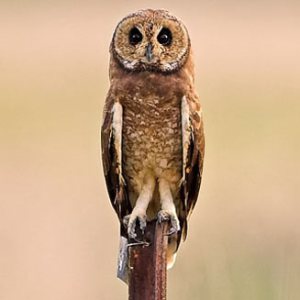
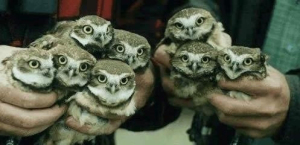


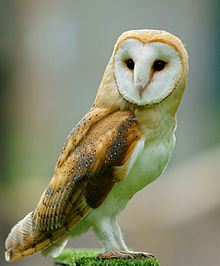
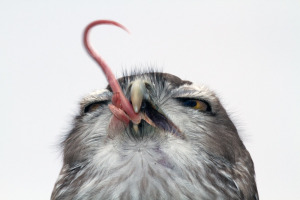
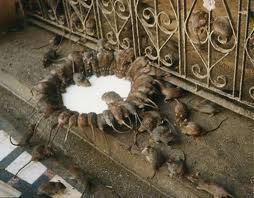

Just stopping by to let you know that I nominated you for the Versatile blogger award. Keep the crazy animal posts comin’!
Thank you kindly. I’ve been on a bit of a break (I started a new job) but I’ll be back soon.
Ok, this really grossed me out….what with all the talk of rats…but my boys will love it. Thanks!
You can thank me later…
One of your best posts, adore this, thank you from the UK x
Thank you kindly.
Those Wood Owls having been hitting the sauce, eh? I mean, I’ve never seen such a clearly hungover bird….
And now you have…
Oh yes, definitely. But in this case, I’d say he brewed his own, wouldn’t you?